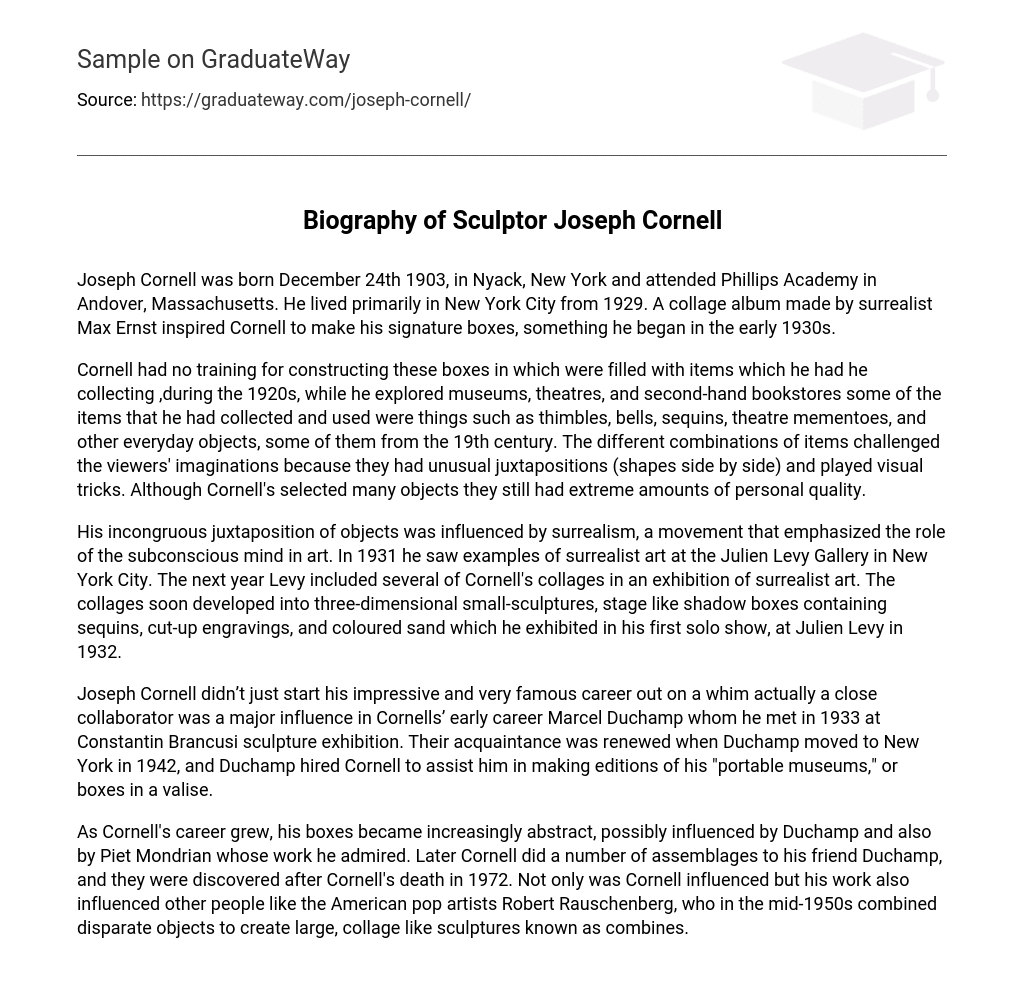Joseph Cornell was born December 24th 1903, in Nyack, New York and attended Phillips Academy in Andover, Massachusetts. He lived primarily in New York City from 1929. A collage album made by surrealist Max Ernst inspired Cornell to make his signature boxes, something he began in the early 1930s.
Cornell had no training for constructing these boxes in which were filled with items which he had he collecting ,during the 1920s, while he explored museums, theatres, and second-hand bookstores some of the items that he had collected and used were things such as thimbles, bells, sequins, theatre mementoes, and other everyday objects, some of them from the 19th century. The different combinations of items challenged the viewers’ imaginations because they had unusual juxtapositions (shapes side by side) and played visual tricks. Although Cornell’s selected many objects they still had extreme amounts of personal quality.
His incongruous juxtaposition of objects was influenced by surrealism, a movement that emphasized the role of the subconscious mind in art. In 1931 he saw examples of surrealist art at the Julien Levy Gallery in New York City. The next year Levy included several of Cornell’s collages in an exhibition of surrealist art. The collages soon developed into three-dimensional small-sculptures, stage like shadow boxes containing sequins, cut-up engravings, and coloured sand which he exhibited in his first solo show, at Julien Levy in 1932.
Joseph Cornell didn’t just start his impressive and very famous career out on a whim actually a close collaborator was a major influence in Cornells’ early career Marcel Duchamp whom he met in 1933 at Constantin Brancusi sculpture exhibition. Their acquaintance was renewed when Duchamp moved to New York in 1942, and Duchamp hired Cornell to assist him in making editions of his “portable museums,” or boxes in a valise.
As Cornell’s career grew, his boxes became increasingly abstract, possibly influenced by Duchamp and also by Piet Mondrian whose work he admired. Later Cornell did a number of assemblages to his friend Duchamp, and they were discovered after Cornell’s death in 1972. Not only was Cornell influenced but his work also influenced other people like the American pop artists Robert Rauschenberg, who in the mid-1950s combined disparate objects to create large, collage like sculptures known as combines.





